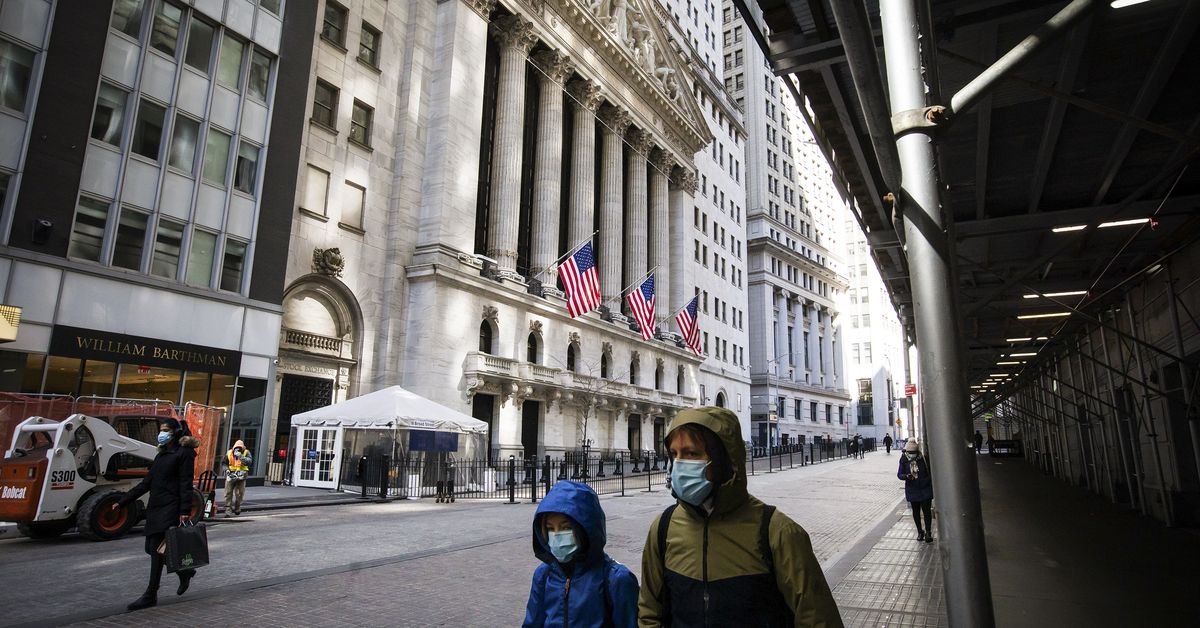Even as hundreds of thousands of lives were lost, millions of people were laid off and businesses shuttered, protests against police violence erupted across the nation in the wake of George Floyd’s murder, and the outgoing president refused to accept the outcome of the 2020 election — supposedly the market’s nightmare scenario — for weeks, the stock market soared.
The disconnect between Wall Street and Main Street, between corporate CEOs and the working class, has perhaps never felt so stark.
To the extent that there can ever be an explanation for what’s going on with the stock market, there are some straightforward financial answers here.
Still, those explanations, to many people, don’t feel fair.
But the pandemic exposed and reinforced the way the wealthy and powerful experience what’s happening so much differently than those with less power and fewer means — and force the question of how the prosperity of those at the top could be better shared with those at the bottom.
In an interview with Vox last April, CNBC host Jim Cramer recalled wondering whether “another shoe will drop on this coronavirus outbreak” in early February, only to see stocks keep rising steadily.
“No one had any idea of what the future was going to be, how deep this is, how long it would be, how wide it would be,” said Howard Silverblatt, senior index analyst at S&P Dow Jones Indices.
Most analysts and experts point to the Fed as the most important factor in supporting market confidence.
Continued confidence in a dovish Fed has only reinforced market bullishness; while a bad jobs report may be bad for businesses and workers, to investors, it’s also more reassurance that low interest rates aren’t going anywhere.
The issue is, the Fed is a much more powerful force on Wall Street than it is Main Street.
And luckily for many struggling people and businesses, Congress stepped in with fiscal policy that could be more effective in helping the broader economy — a move that, no doubt, also helped markets.
Still, some wonder whether the Fed couldn’t have tried to go further to make sure its programs to support corporations flow to people other than shareholders.
Goldstein pointed to a September report from the House of Representatives’ Select Subcommittee on the Coronavirus Crisis that found the Fed bought corporate bonds from at least 95 companies that issued dividends to shareholders while also laying off workers.
Companies have been ruled by the mantra of shareholder primacy, where maximizing profits for investors is the end-all, be-all, for decades.
Jack Ablin, the founding partner of Cresset Capital, recalls calling clients in the spring of 2020 and telling them they didn’t know how long the lockdowns and virus would last, but they were “confident” that within a year, it would be done.
Not everything had to break in Wall Street’s favor for the market rally to continue — as mentioned, between the Fed and the future promise of corporate profits, investors had plenty of reasons to be confident — but it doesn’t hurt that it kind of did.
Had Democrats not taken both US Senate seats in Georgia, the $1.9 trillion American Rescue Plan, signed into law in March, would not have happened.
It does look like the US is poised to emerge from the pandemic much before the rest of the world and spend its way to an economic recovery that many other countries could not.
“There are two lessons to be learned over the past year.
But the vaccines are becoming more and more available, and while they’re lagging a bit behind, we do think they’ll catch up, and they’ve tended to have the cheaper valuations to go with that,” Malik said.
There are still plenty of risks to the market, including that in the US, President Joe Biden and Democrats may take steps to raise taxes that would mean a hit for the bottom lines of corporations and investors.
“We have an administration that clearly has ambitions and wants to pay for them by taxing capital, taxing corporate profits, now taxing capital gains.
Hooper, from Invesco, offered up the explanation of the Fed.
White people are also the overwhelming majority of market beneficiaries — by Palladino’s estimates, 92 percent of corporate equity and mutual fund value is owned by white households, compared to less than 2 percent each by Black and Hispanic households.
“People often forget how concentrated corporate equity holdings are,” Palladino said.
If the US wants to create a fairer, less extractive economy where corporations and shareholders aren’t living a very different reality than people trying to pay their rent or find a job, there are ways to do it.
In 2019, the Business Roundtable, a major business lobbying group, issued a statement that it would redefine the “purpose of a corporation” as one that fosters “an economy that serves all Americans.” The government and the public could find ways to hold them to it.
“If you can assess that the economy is good when we’re in one of the worst economic moments of American history, then it’s a useless measure,” said Maurice BP-Weeks, co-executive director of the Action Center on Race and the Economy.
The past year has been a truly wild ride in America and for the stock market, though in different directions.
Financial contributions from our readers are a critical part of supporting our resource-intensive work and help us keep our journalism free for all.
